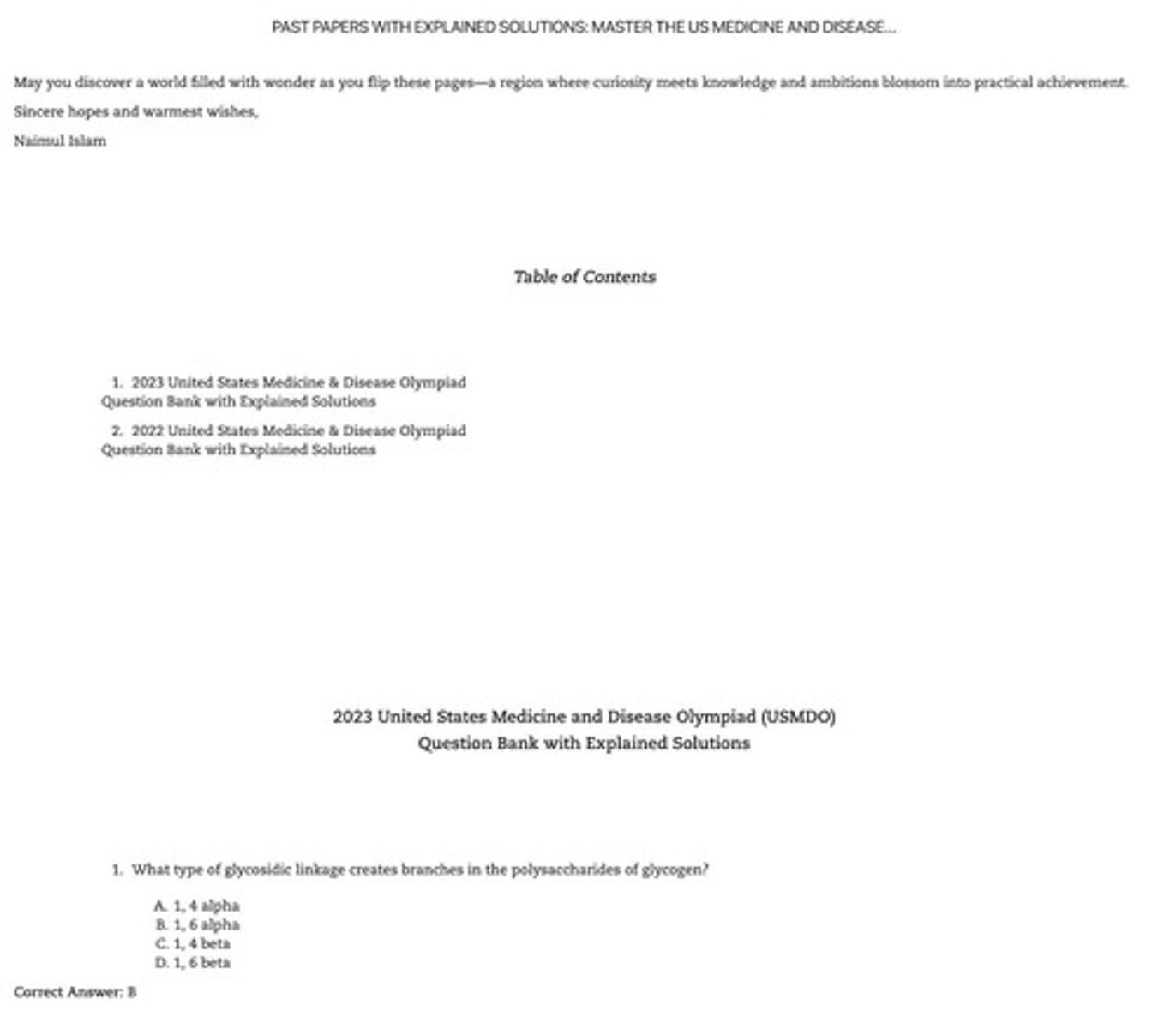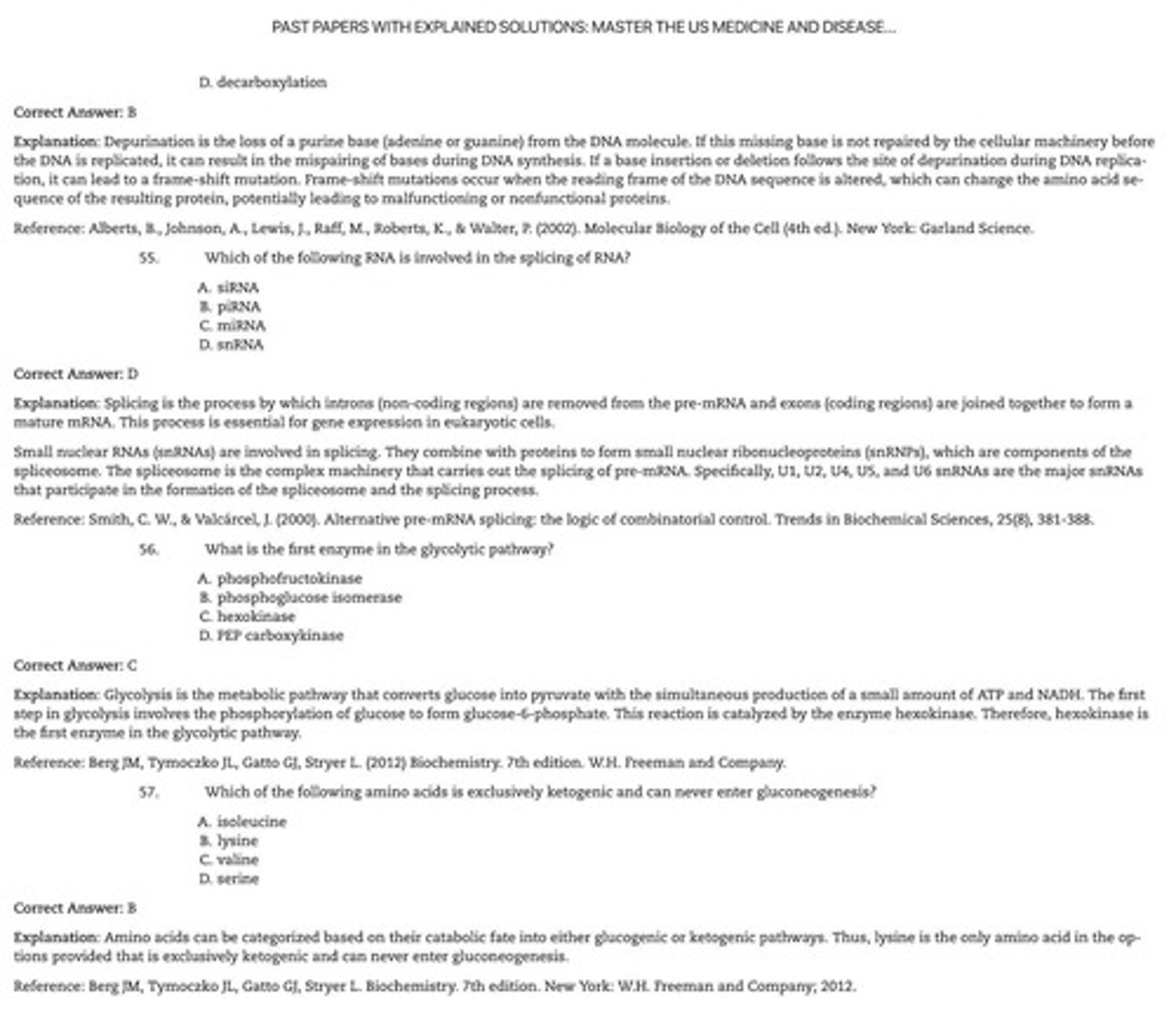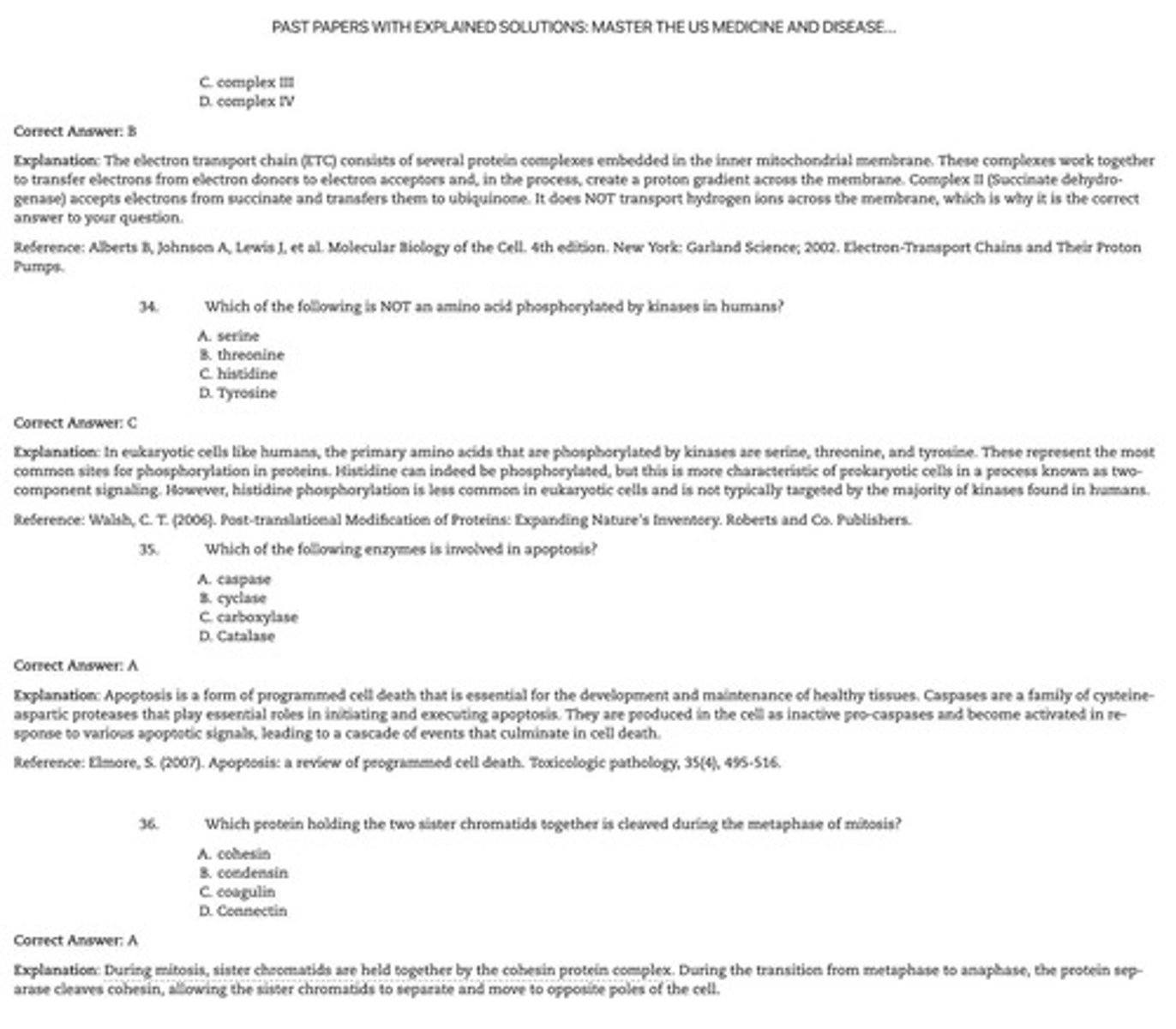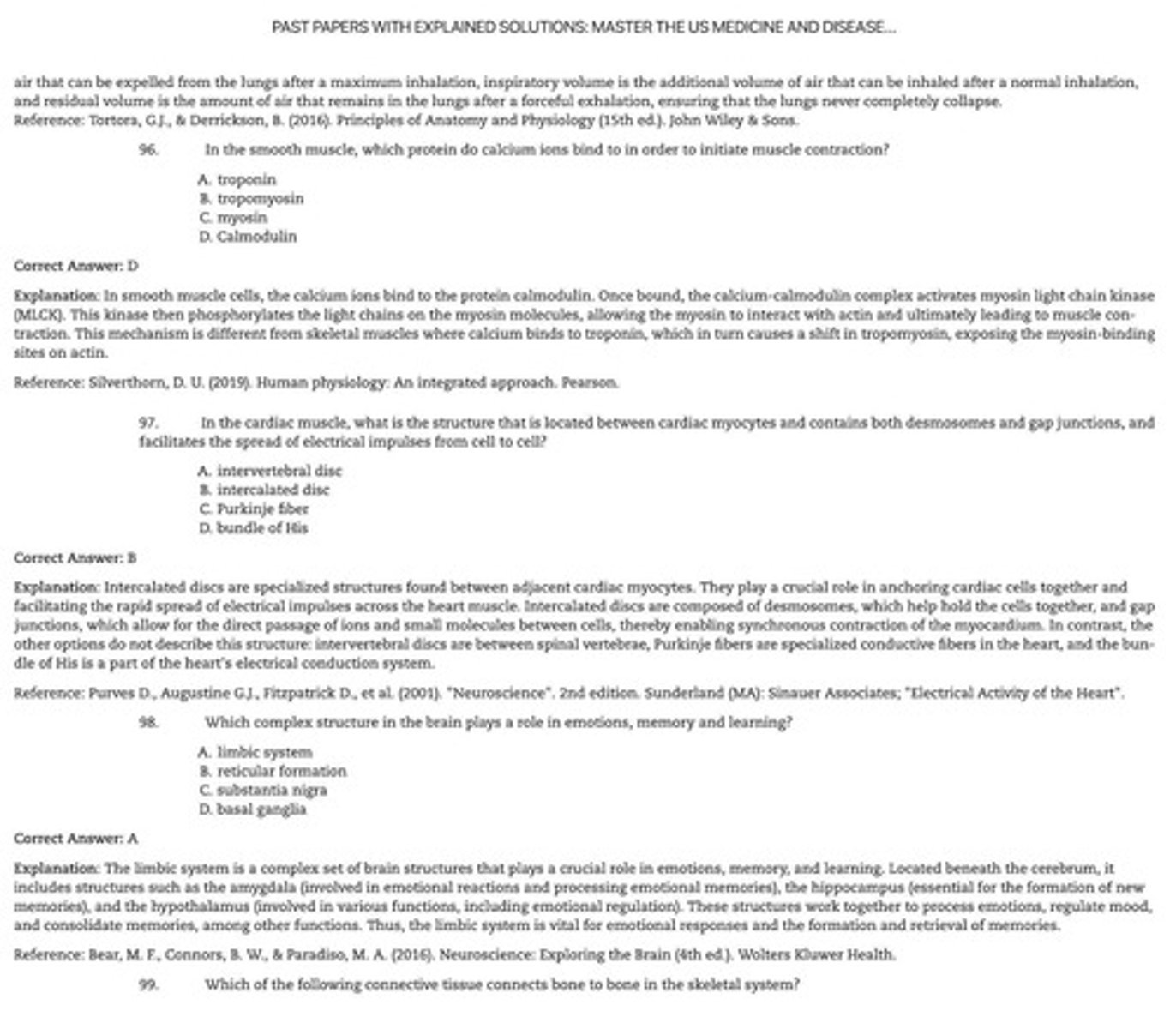US Medicine and Disease Olympiad: Past Papers Solutions
1/474
There's no tags or description
Looks like no tags are added yet.
Name | Mastery | Learn | Test | Matching | Spaced |
|---|
No study sessions yet.
475 Terms
Glycogen
Primary glucose storage form in animals.
Glycosidic Linkage
Bond linking monosaccharides in polysaccharides.

1,6 Alpha Linkage
Type of glycosidic bond creating glycogen branches.
Nucleolus
Nucleus region assembling ribosomal subunits.
Ribosomal RNA (rRNA)
RNA component of ribosomes, essential for protein synthesis.
Ribosomal Subunits
Complex of rRNA and proteins forming ribosomes.
Protein Functions
Roles include catalysis, transport, and movement.
Energy Storage
Primarily done by carbohydrates and lipids.
Gluconeogenesis
Process converting proteins to glucose when needed.
Tight Junction
Intercellular junction preventing protein diffusion in membranes.
Zonula Occludens
Another name for tight junctions in epithelial cells.
Apical Surface
Top surface of epithelial cells facing the lumen.
Basolateral Surface
Bottom surface of epithelial cells facing underlying tissue.
Phosphofructokinase-I (PFK-I)
Key glycolysis enzyme regulated by ATP and AMP.
Fructose-6-Phosphate
Substrate phosphorylated to form fructose-1,6-bisphosphate.
Citrate
Metabolite that inhibits PFK-I in glycolysis.
Hexokinase
Enzyme catalyzing the first step of glycolysis.
Phosphoglucose Isomerase
Enzyme converting glucose-6-phosphate to fructose-6-phosphate.
G3P Dehydrogenase
Enzyme involved in glycolysis, converting G3P to 1,3-BPG.
Desmosome
Cell junction providing mechanical strength between cells.
Hemidesmosome
Anchors epithelial cells to the basement membrane.
Gap Junction
Intercellular junction allowing communication between cells.
ATP
Energy currency of the cell, inhibits PFK-I.
PFK-I
Enzyme activated by AMP, promoting glycolysis.
AMP
Indicator of low energy, activates PFK-I.
Glycolysis
Pathway converting glucose to pyruvate, producing ATP.

Pyruvate
Three-carbon product of glycolysis from glucose.
NADH
Reduced form of NAD+, produced during glycolysis.
CO2
Not produced in glycolysis; generated in citric acid cycle.
Citric Acid Cycle
Metabolic cycle producing CO2 from pyruvate.

Fructose-1,6-bisphosphatase
Enzyme for reverse reaction in gluconeogenesis.
Enolase
Enzyme in glycolysis, not used in gluconeogenesis.
Beta-Oxidation
Process breaking down fatty acids for energy.

Mitochondria
Primary site for beta-oxidation of fatty acids.
Peroxisome
Organelle involved in initial beta-oxidation steps.
Pleiotropy
Single gene affecting multiple phenotypic traits.
Marfan Syndrome
Example of pleiotropy affecting multiple body systems.
Polygenic Inheritance
Trait influenced by multiple genes.
Epistasis
Interaction where one gene affects another's expression.
Norm of Reaction
Phenotypic expression range due to environmental factors.
Pyruvate Kinase
Enzyme catalyzing last step of glycolysis.
Alternative RNA splicing
Combines different exons to produce diverse proteins.
Introns
Non-coding regions removed during mRNA processing.
Exons
Coding regions joined to form mature mRNA.
DSCAM gene
Can produce thousands of protein isoforms via splicing.
siRNA
Short interfering RNA involved in gene silencing.
RISC
Complex that uses siRNA to degrade target mRNA.
RNA interference
Process that inhibits gene expression using RNA.
Lipopolysaccharide
Endotoxin in gram-negative bacteria's outer membrane.
Septic shock
Life-threatening inflammatory response from LPS in bloodstream.
Transduction
Bacterial DNA transfer via bacteriophages.
Bacteriophage
Virus that infects bacteria and transfers DNA.
Genetic recombination
Process of exchanging genetic material between organisms.
Catalase
Enzyme that detoxifies hydrogen peroxide in peroxisomes.
Hydrogen peroxide
Toxic byproduct that catalase converts to water and oxygen.
Transformation
Uptake of naked DNA by a bacterium.
Conjugation
Direct transfer of DNA between bacteria through contact.
Phospholipase
Enzyme that hydrolyzes phospholipids in membranes.
Glycosyltransferase
Enzyme that adds sugar moieties to molecules.
Ribosyltransferase
Enzyme that transfers ribose sugars to substrates.
Caspase
Enzyme that plays a role in apoptosis.
Cyclase
Enzyme that catalyzes the formation of cyclic nucleotides.
Carboxylase
Enzyme that adds carboxyl groups to substrates.
Kinesin
Motor protein moving from minus to plus microtubule end.
ATP hydrolysis
Energy source for kinesin movement along microtubules.
Epigenetic inheritance
Gene function changes without DNA sequence alteration.
Imprinting
Parental influence on gene expression based on origin.
Smooth endoplasmic reticulum
Organelle involved in calcium storage and detoxification.
Non-competitive inhibition
Inhibitor binds away from active site, reducing Vmax.
Vmax
Maximum rate of enzyme-catalyzed reaction.
Km
Substrate concentration at which reaction rate is half Vmax.
Allosteric site
Binding site on enzyme distinct from active site.
Competitive inhibition
Inhibitor competes with substrate for active site.
Calcium storage
Function of smooth ER related to muscle contraction.
Detoxification
Process of neutralizing harmful substances in smooth ER.
Steroid production
Synthesis of steroids occurring in smooth endoplasmic reticulum.
Substrate affinity
Strength of enzyme-substrate interaction, represented by Km.
Conformational change
Structural alteration of enzyme affecting its activity.
Enzyme activity
Rate at which an enzyme catalyzes a reaction.
Molecular Biology of the Cell
Reference book for cellular biology concepts.
Nature Reviews Genetics
Journal discussing genetic inheritance and epigenetics.
Biochemistry
Field studying chemical processes within living organisms.
Oxaloacetate
A four-carbon molecule in the citric acid cycle.
Acetyl-CoA
Key molecule entering the citric acid cycle.
GTP
Energy molecule produced in the citric acid cycle.
FADH2
Electron carrier yielding less ATP than NADH.
IP3
Second messenger opening calcium channels in the ER.
DAG
Second messenger produced alongside IP3 from PIP2.
Calcium Ions (Ca2+)
Released into cytoplasm, increasing intracellular calcium concentration.
G2 Checkpoint
Cell cycle checkpoint for DNA damage repair before mitosis.
Mitosis
Process of cell division producing two identical daughter cells.
Cyclin
Protein that activates cyclin-dependent kinase (CDK) for mitosis.
CDK
Cyclin-dependent kinase, forms MPF with cyclin.
MPF
Maturation-promoting factor stimulating entry into mitosis.
Sister Chromatids
Identical copies of a chromosome separated during mitosis.
Phospholipase C (PLC)
Enzyme cleaving PIP2 to produce DAG and IP3.
PIP2
Phosphatidylinositol bisphosphate, precursor for IP3 and DAG.
Intracellular Calcium Concentration
Increased by IP3-mediated calcium channel opening.
Cell Cycle
Series of phases including G1, S, G2, and M.
M Phase
Phase of cell cycle where mitosis occurs.